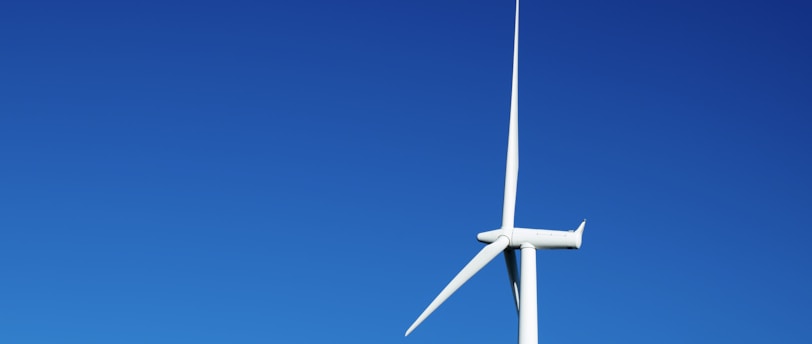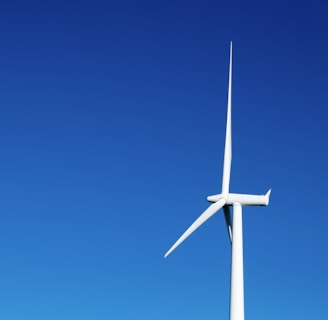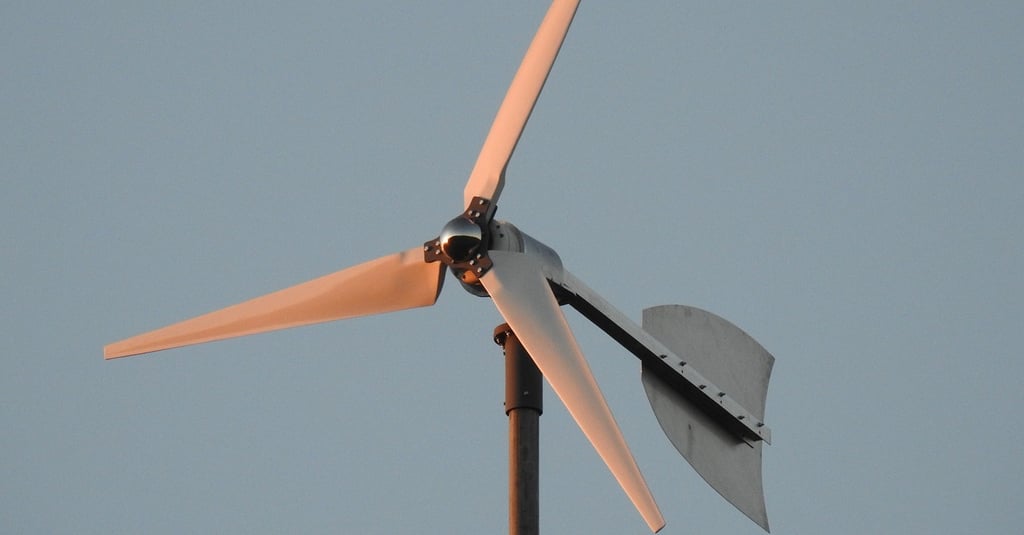Residential Wind Turbines: A Technical Guide
Explore residential wind turbines, including installation, cost-benefit analysis, and environmental impact, in this comprehensive guide designed for homeowners.
WIND GUIDE
6 min read


The article will cover essential topics such as the selection of turbines, integration with existing power systems, and the evaluation of wind resources at home. By emphasizing the technical aspects and potential outcomes, we aim to provide a resource for readers seeking to make informed decisions about adopting wind energy on a residential scale.
"...optimization in residential wind turbines hinges on precise site assessment"
Maximizing Efficiency with Residential Wind Turbines: A Technical Guide
Wind energy conversion involves transforming the kinetic energy of wind into electrical power, a process facilitated by the aerodynamic design of turbine blades and the efficiency of the generator. Residential wind turbines typically operate on the principle of lift, where the shape of the blades allows them to catch wind, rotating the rotor connected to a generator. The efficiency of this conversion process is influenced by factors such as the blade material, length, and the turbine's overall design, which determines its capacity to harness varying wind speeds. Advanced models incorporate smart technologies to optimize angle and speed, maximizing energy output in diverse wind conditions.
The technical performance of residential wind turbines is also measured by their capacity factor, which compares the actual energy produced to the potential output if the turbine operated at full capacity continuously. Factors affecting this include the turbine's location, height, and the local wind profile. Innovations in turbine design focus on maximizing the capacity factor, with some models achieving levels that rival commercial wind farms. Understanding these technical elements is crucial for homeowners to choose the most efficient turbine for their specific needs.
Selecting the ideal residential wind turbine involves a comprehensive evaluation of technical criteria, including energy needs, wind resource assessment, and compatibility with existing electrical systems. Homeowners must first determine their average energy consumption and match it with the turbine's output capacity to ensure energy sufficiency. A critical step is conducting a wind resource assessment, which involves analyzing wind speed and direction data to estimate potential energy production. Additionally, the integration of wind turbines with home energy systems requires understanding grid-tied versus off-grid configurations and the potential for energy storage solutions. This analysis not only guides homeowners in choosing the right turbine size and type but also in making informed decisions about installation and long-term energy planning.
We Recommend This 2000 Watt Vertical Axis Turbine Kit
The practical implementation of residential wind turbines requires meticulous planning and adherence to technical specifications to ensure efficiency and safety. This process begins with a detailed site survey to evaluate wind resources, followed by obtaining necessary permits, which vary based on local regulations and may include zoning, building, and electrical permits. It is imperative to consult with professionals during the planning phase to identify the optimal turbine location, taking into account factors such as wind patterns, obstructions, and property boundaries. The foundation for the turbine must be carefully designed to withstand wind loads and vibrations, often requiring a concrete base engineered to specific depth and specifications based on soil analysis and turbine weight.
Site Assessment: Conduct a comprehensive wind resource assessment using anemometers and wind vane data over a minimum period of one year to ensure the chosen site can provide sufficient wind energy.
Permitting: Secure all necessary local, state, and federal permits, which may involve environmental impact assessments, to comply with legal requirements for residential wind turbine installations.
Foundation Preparation: Excavate the site to the required depth and construct a reinforced concrete foundation tailored to the turbine model's specifications and local soil conditions.
Turbine Assembly: Assemble the turbine components, including the tower, nacelle, and blades, on the ground, ensuring all parts are correctly aligned and securely fastened.
Tower Erection: Carefully raise the tower into position on the foundation, employing cranes or specialized equipment for larger turbines, under the supervision of experienced technicians.
Electrical Connections: Connect the turbine to the home's power system, using high-quality, weather-resistant cabling and appropriate safety devices, such as surge protectors and disconnect switches.
Testing and Commissioning: Perform thorough testing of the turbine's mechanical and electrical systems, followed by commissioning to optimize performance settings based on initial operating data.
Regular Maintenance: Schedule regular inspections and maintenance to identify and address wear and tear on turbine components. This practice prolongs the turbine's lifespan and maintains optimal energy production efficiency.
Monitoring Systems: Implement a monitoring system to track the turbine's performance and energy output in real-time. This allows for immediate detection of issues and enables data-driven adjustments to enhance efficiency.
Emergency Preparedness: Develop and familiarize all household members with an emergency response plan for potential turbine malfunctions or extreme weather conditions. This plan should include procedures for safely shutting down the turbine and securing the site.
Optimizing Performance and Ensuring Safety
Implementing Residential Wind Energy: Installation Essentials
Criteria for Selecting the Ideal Residential Wind Turbine
Understanding Wind Energy Conversion: The Mechanics of Residential Wind Turbines


Home Wind Turbines on Amazon
Wiring and Configuring Your Home Wind Power System
The electrical setup for residential wind turbines involves intricate wiring and system configuration to ensure efficient energy transfer and integration with the home's electrical grid. At the heart of this system is the turbine's generator, which converts mechanical wind energy into electrical power, necessitating precise connections to an inverter that transforms the generated DC power into AC power compatible with household appliances. The configuration may vary between grid-tied systems, which allow excess electricity to be fed back into the public grid, and off-grid systems, which require battery storage to manage surplus energy. For grid-tied systems, a dual meter setup is often employed to measure both the energy consumed from the grid and the energy fed back, ensuring accurate energy accounting and compensation.
In addition to the primary wiring, safety systems, including circuit breakers and disconnect switches, are essential to protect against overloads and facilitate maintenance or emergency shutdowns. The wiring must be of a suitable gauge to handle the maximum current output of the turbine and protected against environmental factors such as moisture and UV exposure. Special attention should be given to grounding the system adequately to mitigate the risk of lightning strikes, which can cause significant damage to electrical components. Finally, the configuration should be planned to allow for easy access to batteries, inverters, and other system components for routine checks and maintenance, ensuring long-term reliability and performance.


For our Artice on DIY Rooftop Wind Turbine
If Interested in Maximizing Solar Electric Efficiency
Evaluating and Selecting a Residential Wind Turbine System
The technical evaluation and selection of a residential wind turbine system require considering a range of criteria, from energy output capabilities and efficiency to compatibility with existing home infrastructure. Key performance metrics include the turbine's rated capacity (measured in kilowatts), the cut-in wind speed (the minimum wind speed at which the turbine begins generating power), and the capacity factor (a measure of how often the turbine operates at its rated capacity). Comparative analysis should extend to the durability of components, maintenance requirements, and the system's overall environmental impact, including noise and visual considerations. Ultimately, the selection process should align with the homeowner's energy needs, site-specific wind conditions, and budgetary constraints, ensuring an economically viable and environmentally sustainable investment in renewable energy.
Through careful evaluation of energy needs, adherence to best practices in installation and maintenance, and a thoughtful approach to system configuration, homeowners can harness the power of the wind to significantly reduce their carbon footprint and achieve energy independence. Our final recommendation is for prospective adopters to engage with experienced professionals throughout the process, ensuring that their investment in wind energy is both technically sound and economically viable, paving the way for a more sustainable future.


We Recommend This 10,000 Watt Wind Kit
To support our work, we may earn a commission when you buy through links on our site. As an Amazon Associate, I earn from qualifying purchases.
Cookie Notice: Our website uses cookies to enhance your browsing experience. By continuing to use our site, you agree to our use of cookies. If you wish to manage your cookie preferences, you may do so in your browser settings.
To support our work, we may earn a commission when you buy through links on our site. As an Amazon Associate, I earn from qualifying purchases.This page may contain affiliate links, which means if you click through and make a purchase, we may receive a commission at no additional cost to you. This helps support our research and editorial team.




